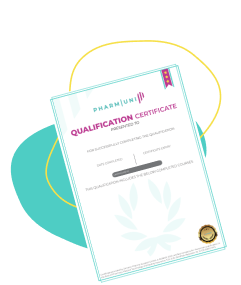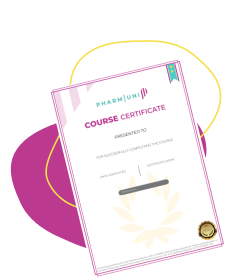Where is e-learning going?
A deep dive into the history of e-learning unveils how the concept evolved and revolved throughout history in line with technology. This article focuses on the future of e-learning and what we can expect to encounter in e-learning development from this point onward.
How it started vs. how’s it going
Let’s think of a scenario: we are eager to learn something new, so we enroll in a class and must be present from morning to afternoon. After lunch, we sit there feeling sleepy, and our eyes droop. We desire a nap, but it is not possible. Instead of concentrating on the course and content, we fight to stay awake. After class, we are glad we didn’t fall asleep, but at the same time, we are frustrated that we still did not get much out of the course content. Some factors can distract our attention from learning, for example, if the content is too complex or not presented in an appealing and interesting way. This imaginary scenario undoubtedly triggered some of your memories of your struggles in a class or other learning sessions. Education is not a one-size-fits-all subject. Learners need to have tailor-made lessons that fit their needs. Education technologies will assist us in experiencing the beauty and ease of learning and education. Personalization and customization are the keys to future education.
Online learning is worth attending and investing in, but there are also some deficiencies, for example, the lack of close and physical interaction with the teacher and other participants. For many, it is still important to have this in-person interaction with the teacher at the very least. Learning customization is not just about the courses an individual wants to attend; in the future, it will also be about customizing the lecturers. Soon, learning platforms could offer avatars as their lecturers, and participants can choose between many. Imagine a group learning session where participants have their own lecturer or educator. Do you doubt this is possible? Technology will soon make this new model a piece of cake. Artificial Intelligence, Augmented and Virtual Reality, Data Analytics, Sensors, Machine Learning, and Ultra-reliable and low latency communication will play significant roles in this new normal.
Online learning: Future objectives
Future platforms seek outcome-based objectives that4:
- Are flexible
- Are data-centric
- Offer virtual engagement
- Support hybrid interaction
Moreover, they should devise a responsive technology strategy to5:
- Optimize the workflow
- Leverage analytics
- Enable effective integration
- Improve engagement
- Provide a satisfying digital and in-person experience
The more our senses and emotions engage with the content, the better we absorb it.
Online learning: emerging technologies
New technologies and developments lead online education to the target of customization. Consider that the field of education will evolve in this century to adapt to some major factors like6:
- Growing access to the internet
- Improvements in technology
- Distributed living and learning
- A new emphasis on problem-solving and gamification
Here we name a few technologies to keep our eyes on:
1. Artificial Intelligence (AI)
The new implementation of AI enhanced testing systems. AI also allows learning to adapt to each learner’s requirements. With the growing number of adaptive learning programs, games, and software, AI has made education individualistic and personalized.
2. Augmented and Virtual Reality (XR)
Augmented reality and virtual reality can support and ameliorate the experience of teaching and learning on online learning platforms. When the virtual environment is created, students and lecturers will have the sensation of the “classroom feeling,” where they think they are in the same room or location. This “classroom feeling” may increase the students’ concentration and motivation. The VR environment significantly benefits teamwork and project collaboration, especially for design assignments or engineering courses7. Augmented and virtual reality make the learning experience live, more appealing, and interactive.
3. Machine Learning
Machine learning analyzes a student’s performance in real-time and modifies teaching methods and the curriculum based on that data. By identifying weaknesses, machine learning enables better content organization and curriculum management. It helps fill the gaps in understanding, thus making learning more effective8.
4. 5G
The fifth generation of cellular networks is up to 100 times faster than 4G. 5G is creating never-before-seen opportunities for people and businesses. Faster connectivity speeds, ultra-low latency, and greater bandwidth are advancing societies, transforming industries, and dramatically enhancing day-to-day experiences. With 5G technology, we can help create a smarter, safer, and more sustainable future9.
What is waiting for us in the future?
As mentioned earlier, most e-learners miss the sense of connectivity and interaction with other individuals. Technology advancement will certainly bridge that gap. To the next generations, future education will resemble playtime more than schooling! Our learning environment will stimulate the five major senses: sight, sound, touch, taste, and smell and implement the Internet of Senses (IoS) as well as somatosensory perception – pressure, temperature, etc. For students, this could mean simulations that allow them to immerse themselves in a historical moment and see and feel what it was like to live in a different time and place — with proper safety measures10.
1 https://interestingengineering.com/life-in-2050-a-glimpse-at-education-in-the-future
2 https://interestingengineering.com/life-in-2050-a-glimpse-at-education-in-the-future
6 https://interestingengineering.com/life-in-2050-a-glimpse-at-education-in-the-future
7 https://tecnoscientifica.com/journal/gisa/article/view/42/30
9 https://www.ericsson.com/en/5g
10 https://interestingengineering.com/life-in-2050-a-glimpse-at-education-in-the-future

